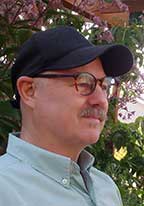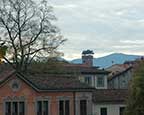professional biography
click to enlarge image icons
mentors
apprentice teacher
journeyman
Most of my life has been in the semi-arid west - Colorado, California, and Idaho. Water scarcity was even a summer issue in Seattle where I lived for several years. Rodney Tapp, Robert Perry and John Lyle, professors at the California State Polytechnic University in Pomona California, had a great impact on my thinking and approach to landscape architecture. The ecosystem management orientation of Lyle and the site scale concern for native and drought tolerant plants emphasized by Bob Perry and the efficient irrigation and construction detailing instruction of Rod imparted a practical and scale integrated approach.
Bob Perry and Rod Tapp were especially influential. They are passionate academics and practitioners. I learned so much doing surveying and landscape construction for Rod and plant research for Bob. They each gave me my first opportunities to teach courses in construction detailing, irrigation, and landscape ecology and the use of native plants first as an apprentice and then as a substitute for them when they took sabbatical leaves.
My graduate school colleague Bud Sutton became a dear friend. His design and graphic talent fueled by his playfulness and passion to create a beautiful world, one parcel at a time, was an inspiration. He gave me my first opportunity to visit and teach briefly in Japan before we immersed ourselves into the great gardens in Kyoto. We also worked together in Purkis-Rose Associated in California, where we studied for the licensing exam in joyful evening and Saturday sessions. We both began to pickup substitute teaching jobs at Cal Poly Pomona thanks to the confidence of our mentors and opportunities presented by Bob Perry and Rod Tapp.
After I got my landscape architecture license I cobbled together a full slate of courses by teaching at both Cal Poly Pomona and UCLA. I did the same pinch hitting at the University of Washington for five years, although I was involved in a couple of businesses also. Tackling the teaching of any course that comes your way is a dramatic and stressful and fulfilling way to extend ones education and learn the craft of teaching. I was surprised to find that talented practitioners who came to the university to teach were often dismal failures. Teaching is as difficult and demanding as the private practice and research aspects of the profession. After several years of doing piece work, I had taught virtually every course in an undergraduate curriculum especially after I had added a few studio courses to my resume at the University of Idaho.

Unfortunately, the research and development of these tutorials, which amount to highly illustrated to text books, was unrecognized by the university as a scholarship product. I also began contributing to study abroad courses through the invitation of the Stephen Drown, our great program chair. First as part of the USAC program and then as a program designed and delivered by the department, I taught summer study abroad programs in Italy from 2000 to 2012, with the exception of only the 2011 summer when I taught an on-campus course. In 2013 I participated in our first study abroad effort in China with two other faculty.
The courses that Professor Drown and I teach abroad are powerfully transformative for students. The program includes a studio, an urban theory and history course, and a language and culture course. The intensive experience encourages amazing professional growth through learning precedents, questioning cultural values and applying new knowledge to the solution of design problems. Unfortunately, the university doesn't recognize teaching in summer programs and fails to release professors at other times to pursue scholarship.
recent scholarship
Thanks to the effort to the program chair, Steve Drown, beginning in 2012 teaching assignments were reduced to allow an eight week period without a studio commitment each semester. This was a boon to my scholarship. I spent a year studying the ecological engineering literature on constructed wetlands for treatment of wastewater. At the end of this period I began to write conference and journal papers that presented the technology and its application to landscape architecture and the solution of persistent landscape problems.
I was awarded the Paul G. Windley Faculty Excellence and Development prize and my first sabbatical leave to produce my second book (Green Infrastructure for Landscape Planning). After research and the production of draft chapters on various aspects of green infrastructure I traveled to Stapleton, Colorado and Stockholm, Sweden to assess the effectiveness of their green infrastructure policies, design process and built environment. These case studies ground the theory and principle chapters of the book.
In 2016, I completed Constructed Wetlands for Sustainable Development with Kongjian Yu.


